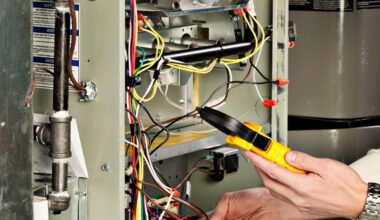Installing blinds used to be one of those jobs that sent people running to hire a professional. Too many parts, confusing instructions, and brackets that never seemed to line up properly. But something’s changed in the past few years. Walk into someone’s home today and there’s a decent chance they installed their own blinds – and they’ll tell you it wasn’t nearly as hard as they expected.
The blind industry has quietly made installation much simpler. Not because they suddenly got generous, but because they realized most people would rather do it themselves if it’s not a nightmare. And when customers can install blinds without hassle, they’re more likely to buy them in the first place.
Pre-Assembled Components Change Everything
The biggest shift is that blinds now come mostly put together. Older systems required assembling the headrail, attaching the fabric or slats, installing the control mechanisms, and then mounting the whole thing. Each step was another chance to mess something up.
Modern blinds arrive with the fabric already attached to the headrail, the controls installed, and the mechanisms tested at the factory. You’re basically just mounting a finished product rather than building something from scratch. This cuts installation time in half and removes most of the frustration.
The brackets are the real improvement though. They used to require precise alignment and multiple screws per bracket. Now most systems use snap-in brackets that are more forgiving. Mount the brackets (which is still the only tricky part), and the blind headrail clicks into place. No fumbling with tiny screws while holding the blind up with one hand.
The difference in blinds is noticeable when you get yours online at My Direct Blinds and similar suppliers – everything arrives ready to install rather than requiring assembly. Open the box, check that the parts are there, and you’re ready to mount.
Cordless Systems Simplify Design
Cordless blinds aren’t just safer for homes with kids – they’re also easier to install because there’s less to deal with. No cord locks to thread, no lift cords to adjust to the right length, no tangled messes to sort out before mounting.
Spring-loaded roller blinds are probably the simplest version. Pull down to lower, pull and release to raise. The mechanism is built into the tube, so installation is just mounting two brackets and sliding the tube in. That’s it.
Motorized blinds sound complicated but are often easier than manual ones. The motor does all the work, and most modern versions are battery-powered so there’s no wiring involved. Mount the brackets, install the blind, pair it with your remote or phone. Done.
Better Instructions Actually Help
Here’s something that sounds obvious but took forever for manufacturers to figure out: clear instructions matter. Modern blind packaging includes visual guides with actual photos instead of confusing diagrams that look like they were drawn in 1987.
Many companies now include QR codes that link to installation videos. Watching someone do it once is worth reading ten pages of text. You can pause, rewind, and actually see how the parts fit together rather than interpreting vague drawings.
The instructions also tend to be shorter now, which seems counterintuitive but works better. Instead of overwhelming you with every possible scenario, they cover the basic installation that applies to 90% of situations. If you have an unusual window, there’s usually a separate guide for that.
Measurement Guides Take the Guesswork Out
Getting measurements right is still the hardest part of buying blinds, but the process is less confusing than it used to be. Most blind suppliers provide detailed measurement guides that explain inside mount versus outside mount with actual photos of what they mean.
The guides walk through common window types and explain how to measure each one. They’ll tell you where to account for window cranks, handles, or other obstructions. This prevents the most common and expensive mistake: ordering blinds that don’t fit.
Universal Mounting Systems Work Anywhere
Older blinds often required specific mounting conditions. Wrong window frame material? You’d need different hardware. Unusual depth? Good luck making the standard brackets work.
Current mounting systems are more adaptable. The brackets work with different screw types, so they’ll mount to wood, drywall, or metal frames. Extension brackets are available for deep window sills without requiring a completely different product.
Surface mount options have also improved. If you can’t or don’t want to drill into your window frame, many blinds now offer mounting solutions that attach to the wall or ceiling above the window. They used to look like an obvious compromise, but newer designs are cleaner.
Fewer Tools Required
Professional installers show up with toolboxes full of specialized equipment. DIY installation used to require at least some of that. Not anymore.
Most blind installations need just three things: a drill (or screwdriver if you’re patient), a level, and a pencil. That’s it. Maybe a tape measure if you’re double-checking measurements, but many people just use their phone’s measuring app now.
The screws come included and they’re actually the right type for the job. Sounds basic, but older blind kits often included terrible screws that would strip immediately or weren’t long enough for a solid mount.
Some brackets now use adhesive strips instead of screws for lightweight blinds. Stick them up, press firmly, wait an hour, mount your blinds. No drilling at all. They’re not suitable for heavy blinds or high-traffic areas where the blinds get adjusted constantly, but for guest rooms or windows you rarely touch, they work fine.
Why This Matters for Homeowners
The practical impact is that window treatments became accessible to people who aren’t particularly handy. You don’t need construction experience or specialized knowledge. If you can hang a picture frame level, you can install modern blinds.
This saves significant money. Professional installation often costs as much as the blinds themselves, sometimes more. Do five windows and you’re looking at hundreds in labor costs. Installing them yourself means that money goes toward better quality blinds instead.
There’s also the scheduling benefit. No waiting weeks for an installer to have an opening. Order your blinds, spend a Saturday afternoon putting them up, and you’re done.
What Still Requires Attention
Even with all these improvements, some things still need careful attention. Measuring accurately is non-negotiable. Being off by even a quarter inch can mean blinds that don’t fit properly or leave gaps that let light through.
Mounting the brackets level matters too. If they’re crooked, the blinds will hang funny and might not operate smoothly. Taking an extra minute to check with a level saves hassle later.
And while modern blinds are easier to install, unusual window shapes or extremely large windows might still benefit from professional help. There’s a difference between installing standard blinds on normal windows and tackling a 10-foot wide sliding door or an angled skylight.
The Bottom Line
Modern blinds aren’t just easier to install by accident – they’re designed that way on purpose. Manufacturers realized that DIY installation removes a major barrier to purchase and eliminates one of the biggest customer complaints.
Pre-assembled components, simplified brackets, cordless designs, and better instructions all add up to an installation process that most homeowners can handle in an afternoon. It’s not that people got better at home improvement projects. The products actually got easier to work with.
That shift opened up window treatments to people who would have hired professionals in the past, making it a realistic DIY project rather than something that requires special skills or tools.



